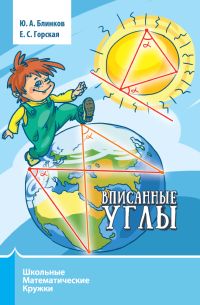
Kiran Kedlaya
. Notes on Euclidean Geometry
. (
pdf)
Abstract
"This book is a compilation and distillation of my notes, as participant and later as instructor,
from the Math Olympiad Program (MOP), the annual summer program to prepare U.S. high
school students for the International Mathematical Olympiad (IMO). As such, it has an
overt and a covert mission. The overt mission is to assist students in preparing for the USA
Mathematical Olympiad (USAMO) and the IMO, as American students have historically
fared poorly on problems in Euclidean geometry. The covert, and perhaps more important,
mission is to introduce said students (and anyone else who happens to read this) to a lineage
of mathematics stretching from ancient times to the present; hence the inclusion of advanced
topics in inversive and projective geometry which may segue into the study of complex
analysis, algebraic geometry, or the like.
The model for this book has been the slender classic Geometry Revisited by H.S.M. Coxeter and S. Greitzer, with which many American IMO participants, myself included, have
supplemented their education in Euclidean geometry. We have gone further by including
some topics neglected there (the circle of Apollonius, directed angles, concurrent perpen-
diculars) and providing numerous problems. Think of this book as “Geometry Revisited”
Revisited, if you will."
H. S. M. Coxeter, S. L. Greitzer
. Geometry Revisited
. The Mathematical Association of America, 1967 (
djvu)
Abstract
"Through the centuries, geometry has been growing. New concepts
and new methods of procedure have been developed: concepts that the
student will find challenging and surprising. Using whatever means will
best suit our purposes, let us revisit Euclid. Let us discover for ourselves
a few of the newer results. Perhaps we may be able to recapture some of
the wonder and awe that our first contact with geometry aroused.
The authors particularly grateful Dr. Anneli Lax for her patient"
Ross Honsberger. Episodes in nineteenth
and twentieth century
euclidean geometry. The Mathematical Association of America. (
djvu)
Abstract
"It is always gratifying to discover that it is within one's ability to appreciate
a mathematics book and to read it with pleasure. I have often dreamt what a
joy it would be to get to know some of the elementary gems that are surely
present in every branch of mathematics, only to be dismayed by the literature I
have been able to find. Undoubtedly the gems are there, but they often lie buried
in textbooks or comprehensive reference works. One is frequently left with the
unhappy choice of undertaking a prolonged study of the field or giving up the
idea altogether. While it takes a knowledgeable scholar to write something out of
the ordinary, the dedicated specialist can get carried away with discussions that
one comes to appreciate only after long and serious study. Unfortunately, this
makes it very difficult for general readers to disentangle the elementary gems of
their heart's desire. On top of this, what passes for a proof is often so concise or
sketchy that it is readily understandable only to someone who already knows the
subject.
It would dearly love to be able to promise that you will find no such frustrations
in the present work. What I can promise is a collection of essays that does not
attempt to cover a large amount of material, and that each topic has been extricated
from the mass of material in which it is usually found and given as elementary
and full a treatment as is reasonably possible. There is no sense pretending there
is any way around the need to lay foundations for one's proofs, but by selecting
from the most accessible topics I hope that many readers will be able to delight
in these gems with a minimum of preliminaries."
Roger A. Johnson. Advanced euclidean geometry. Dover Publications. (
djvu)
Abstract
"This book deals with the geometry of the triangle and the circles, as developed extensively in the nineteenth century by British and Continental writes. This geometry, based entirely on the elementary plane geometry of Euclid or its modern equivalent, is rapidly coming to its due recognition as excellent material for college courses."
Hans Walser. 99 Points of Intersection
Examples-Pictures-Proofs.
The mathemetical association of America.
(
djvu)
Abstract
"The 99 points of intersection presented here were collected during a year-
long search for surprising concurrence of lines. For each example we find
compelling evidence for the sometimes startling fact that in a geometric
figure three straight lines, or sometimes circles, pass through one and the
same point. Of course, we are familiar with some examples of this from basic
elementary geometry - the intersection of medians, altitudes, angle bisectors,
and perpendicular bisectors of sides of a triangle. Here there are many more
examples - some for figures other than triangles, some where even more
than three straight lines pass through a common point."
Paul Yiu. Notes on Euclidean Geometry. (pdf)
Akopyan A., Zaslavsky A. Geometry of Conics. (pdf)
Abstract
"Curvers of second degree, or conics, are traditionally viewed as objects pertaining to analytic geometry and are studied in lower-level courses in
engineering colleges. At best, only the optical properties of conics are mentioned among their geometric properties. But those curves also possess a number of other nice properties, a majority of which can be established by methods of elementary geometry well within the reach of high school students. Moreover, conics help solve some geometric problems seemingly unrelated to conics. In this book the reader will find the most interesting about curves of order two, including those proved recently."




